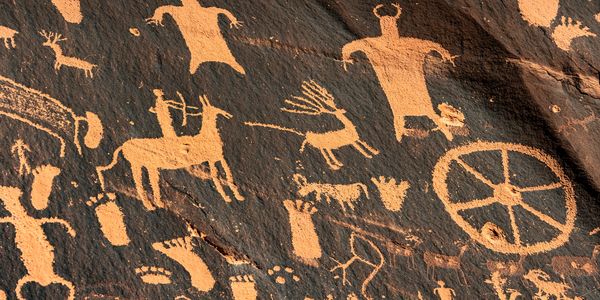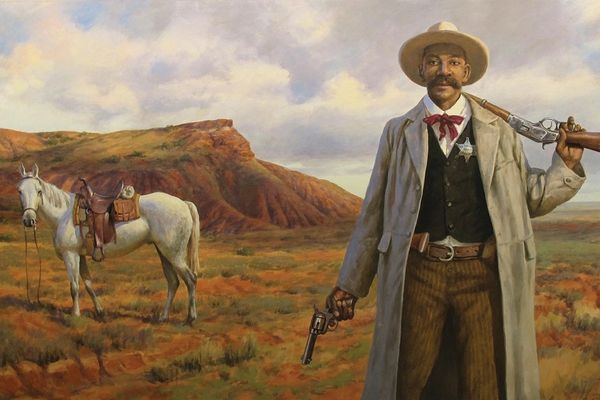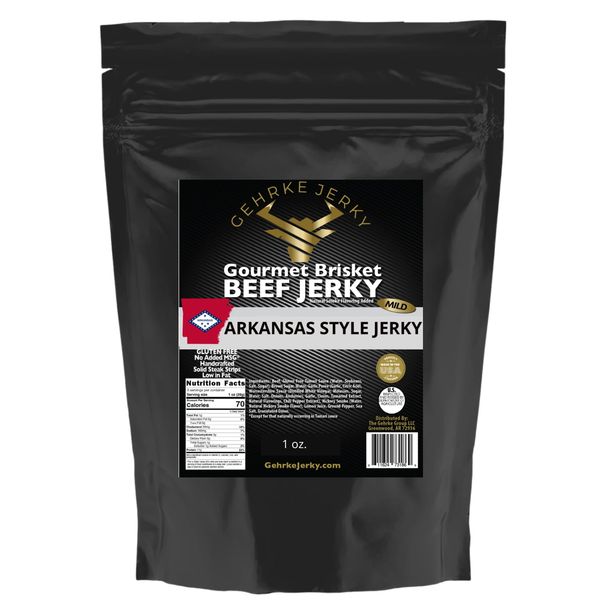Discover Arkansas Style Jerky

Arkansas Early History and Jerky
Arkansas Style Jerky from Gehrke Jerky in Fort Smith, Arkansas, has become one of its most popular and best-selling new flavors. But the reality is that there's nothing new about it. It's actually a recipe that's been around for hundreds of years, and all used by the
Native American tribes with significant historical ties to Arkansas include the Caddo, Cherokee, Choctaw, Osage, and Quapaw. The state's name originates from the Quapaw people, and while no federal reservations are in Arkansas today, descendants and members of these and other tribes reside in the state.

Native American tribes
The Osage utilized the northwest portion of Arkansas for hunting, while the Caddo inhabited the southern portion. The Quapaw's territory made up the eastern part of the state. The Tunica tribe inhabited a small area in the southeast corner, while the Chickasaw tribe inhabited a small area in the northeast portion of the state.

The original recipe
The original recipe had many things similar to what the Native Americans call Pemican. In North America, it was commonly made with dried strips of bison, elk, or deer. These strips of meat were cut thin, dried in the sun, then smoked, and finally ground into a fine powder before adding fat and dried berries. The mixture would be stored in sewn bags of animal hide for easy transport or trade.

A sweet-tart contrast
Pemmican tastes like a combination of beef jerky and sweet or tart dried fruit, with its flavor and texture varying depending on the ingredients. The dominant flavors are savory, meaty, and sometimes smoky from the rendered meat, but the high fat content can leave a greasy coating in your mouth. Adding fruits like blueberries or cranberries provides a sweet-tart contrast, while sweeteners like honey, molasses, or maple syrup can further enhance the taste.

WHATS IT TASTE lIKE?
Pemmican tastes like a combination of beef jerky and sweet or tart dried fruit, with its flavor and texture varying depending on the ingredients. The dominant flavors are savory, meaty, and sometimes smoky from the rendered meat. Adding fruits like blueberries or cranberries provides a sweet-tart contrast, while sweeteners like honey, molasses, or maple syrup can further enhance the taste.

European fur trappers and explorers
Many Native American tribes had their own version of pemmican. Later, European fur trappers and explorers adopted it for their own use in the New World. Pemmican ingredients varied widely, but they always included lean venison or buffalo meat mixed with fat. Some pemmican recipes also incorporated dried berries and nuts for added flavor and nutrition. The basic process for making pemmican involved pounding dried meat into a rough powder and then mixing it with an equal amount of rendered fat. After processing, the shelf life of pemmican is measured in years rather than days. It was the ideal trail food that could be eaten as is or cooked and rehydrated in stews.

Even Cowboys like Bass Reeve's ate Arkansas Jerky
Early settlers, cowboys, and Lawmen like the famous Marshall, Bass Reeves, ate Arkansas-style jerky, and yes, he was a resident of Fort Smith, Arkansas.

An excellent food source
Many native peoples of America depended on pemmican for their survival. It kept well, and it was an excellent food source, especially during hard winter months. Pemmican was also an important food source for many voyagers and fur traders. The demand for pemmican put a tremendous strain on the buffalo herd.

Taste For Yourself
Now you can try for yourself what Arkansas-style jerky really tastes like.
Get a taste of the Ozarks from the Natural State.
GET A FREE 1oz. SAMPLE BAG TO TRY
Copyright © 2025 Arkansas Style Jerky - All Rights Reserved.
This website uses cookies.
We use cookies to analyze website traffic and optimize your website experience. By accepting our use of cookies, your data will be aggregated with all other user data.